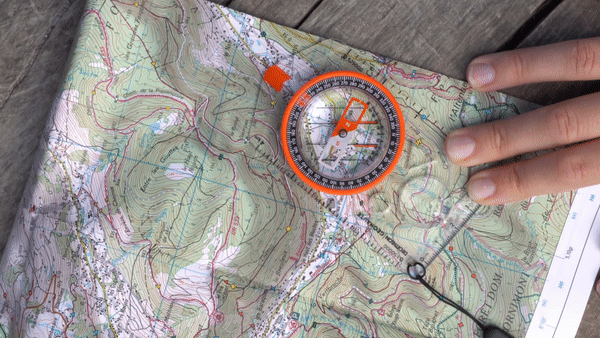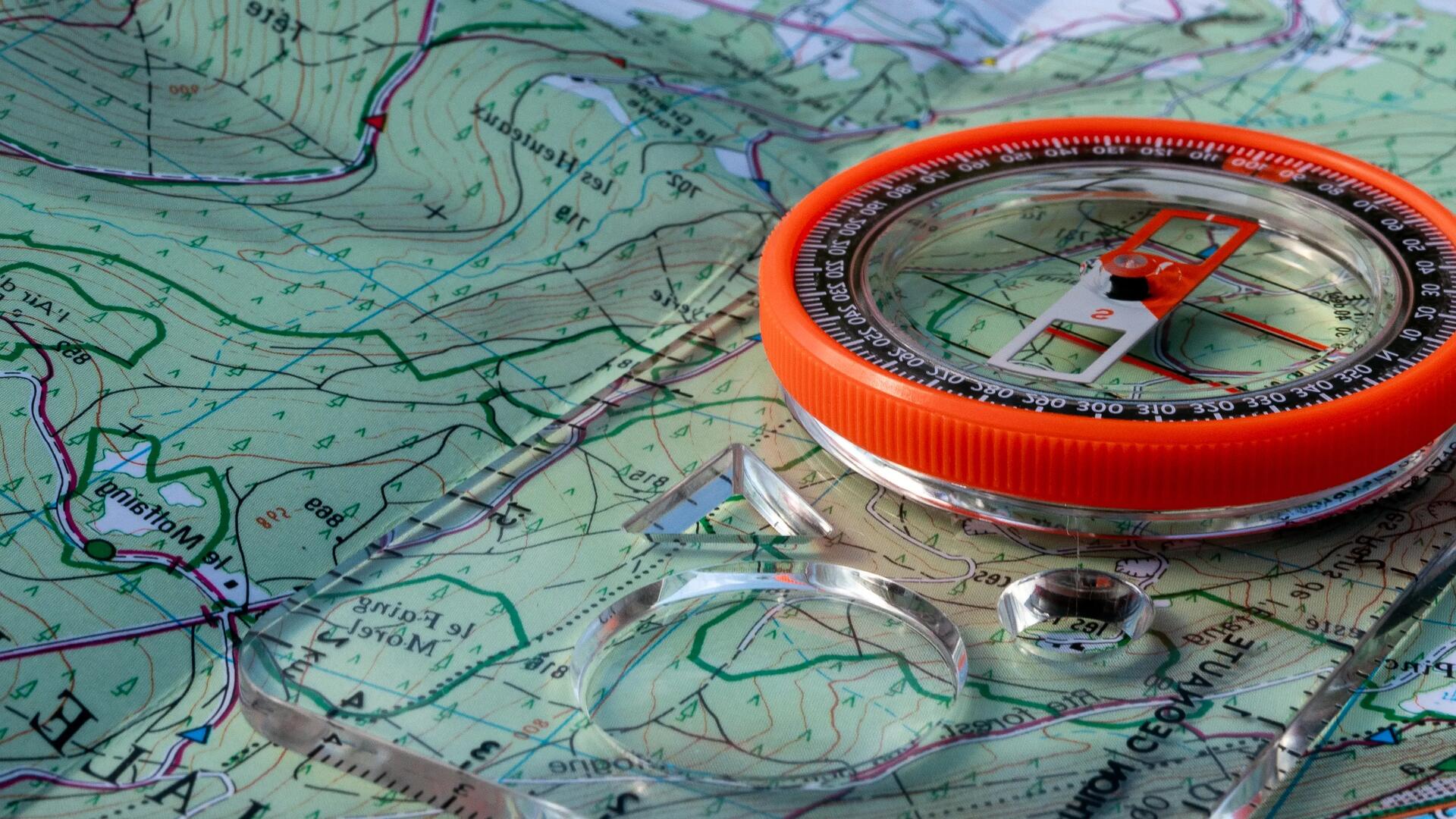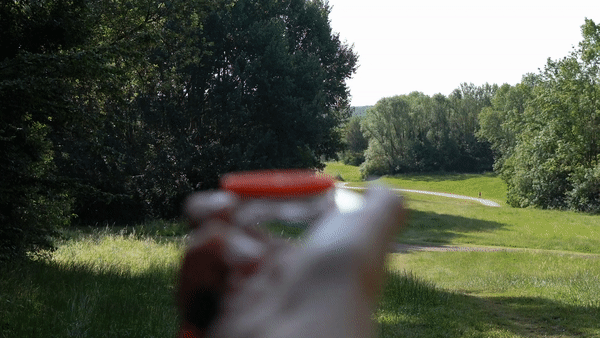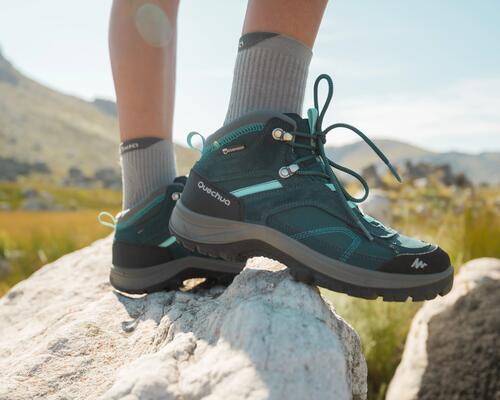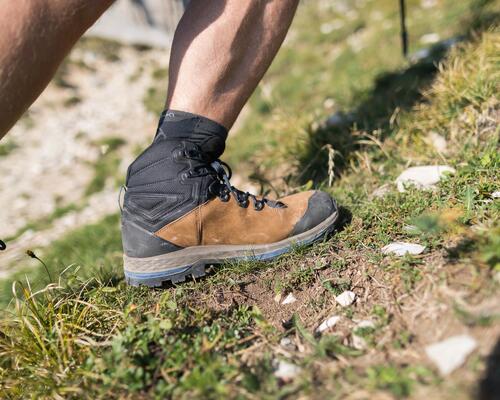Parts of a compass
- Direction of travel arrow (on the compass base plate): Points towards your destination or a landmark.
- Magnetic compass needle (moves freely): Red indicates north.
- Rotating bezel/degree dial: Allows you to find your bearings by calculating the angle (on the horizontal plane) between the direction of an object and a reference direction (called the azimuth).
- Orienting arrow (in the window of the dial): Used for orientation without a map.
- Map scale/rulers: Allows you to calculate the distance to your destination.
The difference between true north and magnetic north
True north refers to the north pole at the top of the axis that the earth rotates on: the northern point where all meridians (lines of longitude) converge on a map. Magnetic north, on the other hand, refers to the place on the earth’s surface where its magnetic field goes vertically down into the planet. Compasses point towards magnetic north, which does not exactly correspond to true north, and actually changes geographic position all the time.


